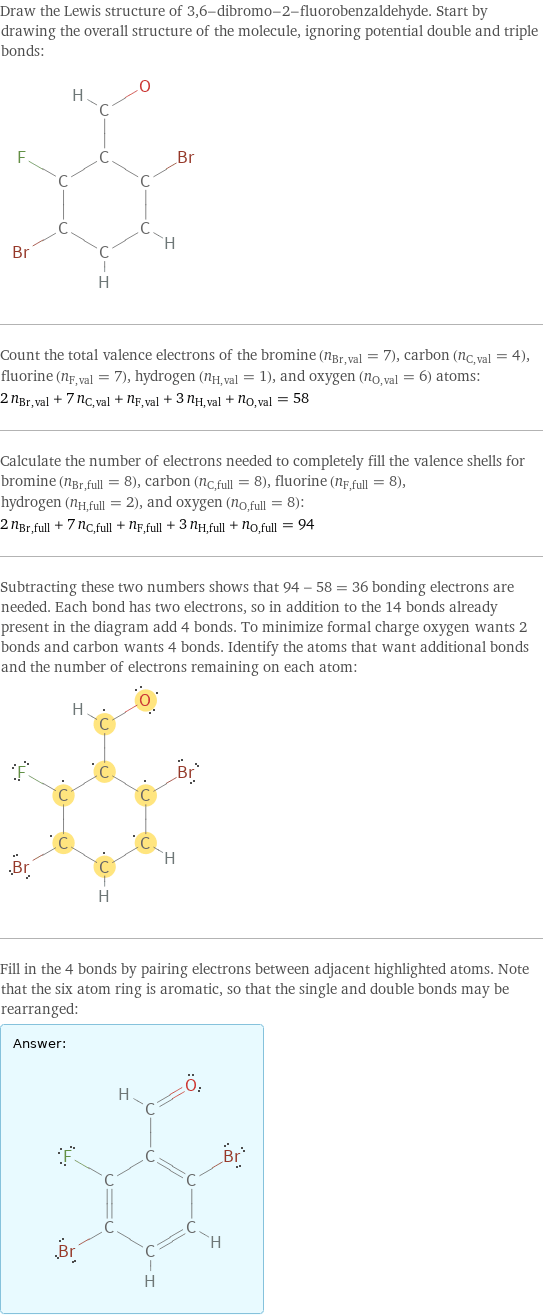Input interpretation

3, 6-dibromo-2-fluorobenzaldehyde
Chemical names and formulas

formula | C_7H_3Br_2FO name | 3, 6-dibromo-2-fluorobenzaldehyde alternate names | 3, 6-dibromo-2-fluoro-benzaldehyde mass fractions | Br (bromine) 56.7% | C (carbon) 29.8% | F (fluorine) 6.74% | H (hydrogen) 1.07% | O (oxygen) 5.68%
Lewis structure

Draw the Lewis structure of 3, 6-dibromo-2-fluorobenzaldehyde. Start by drawing the overall structure of the molecule, ignoring potential double and triple bonds: Count the total valence electrons of the bromine (n_Br, val = 7), carbon (n_C, val = 4), fluorine (n_F, val = 7), hydrogen (n_H, val = 1), and oxygen (n_O, val = 6) atoms: 2 n_Br, val + 7 n_C, val + n_F, val + 3 n_H, val + n_O, val = 58 Calculate the number of electrons needed to completely fill the valence shells for bromine (n_Br, full = 8), carbon (n_C, full = 8), fluorine (n_F, full = 8), hydrogen (n_H, full = 2), and oxygen (n_O, full = 8): 2 n_Br, full + 7 n_C, full + n_F, full + 3 n_H, full + n_O, full = 94 Subtracting these two numbers shows that 94 - 58 = 36 bonding electrons are needed. Each bond has two electrons, so in addition to the 14 bonds already present in the diagram add 4 bonds. To minimize formal charge oxygen wants 2 bonds and carbon wants 4 bonds. Identify the atoms that want additional bonds and the number of electrons remaining on each atom: Fill in the 4 bonds by pairing electrons between adjacent highlighted atoms. Note that the six atom ring is aromatic, so that the single and double bonds may be rearranged: Answer: | |
3D structure

3D structure
Basic properties

molar mass | 281.91 g/mol
Units

Chemical identifiers

CAS number | 870703-68-7 PubChem CID number | 16217925 PubChem SID number | 24883880 SMILES identifier | C1=CC(=C(C(=C1Br)C=O)F)Br InChI identifier | InChI=1/C7H3Br2FO/c8-5-1-2-6(9)7(10)4(5)3-11/h1-3H MDL number | MFCD08276775